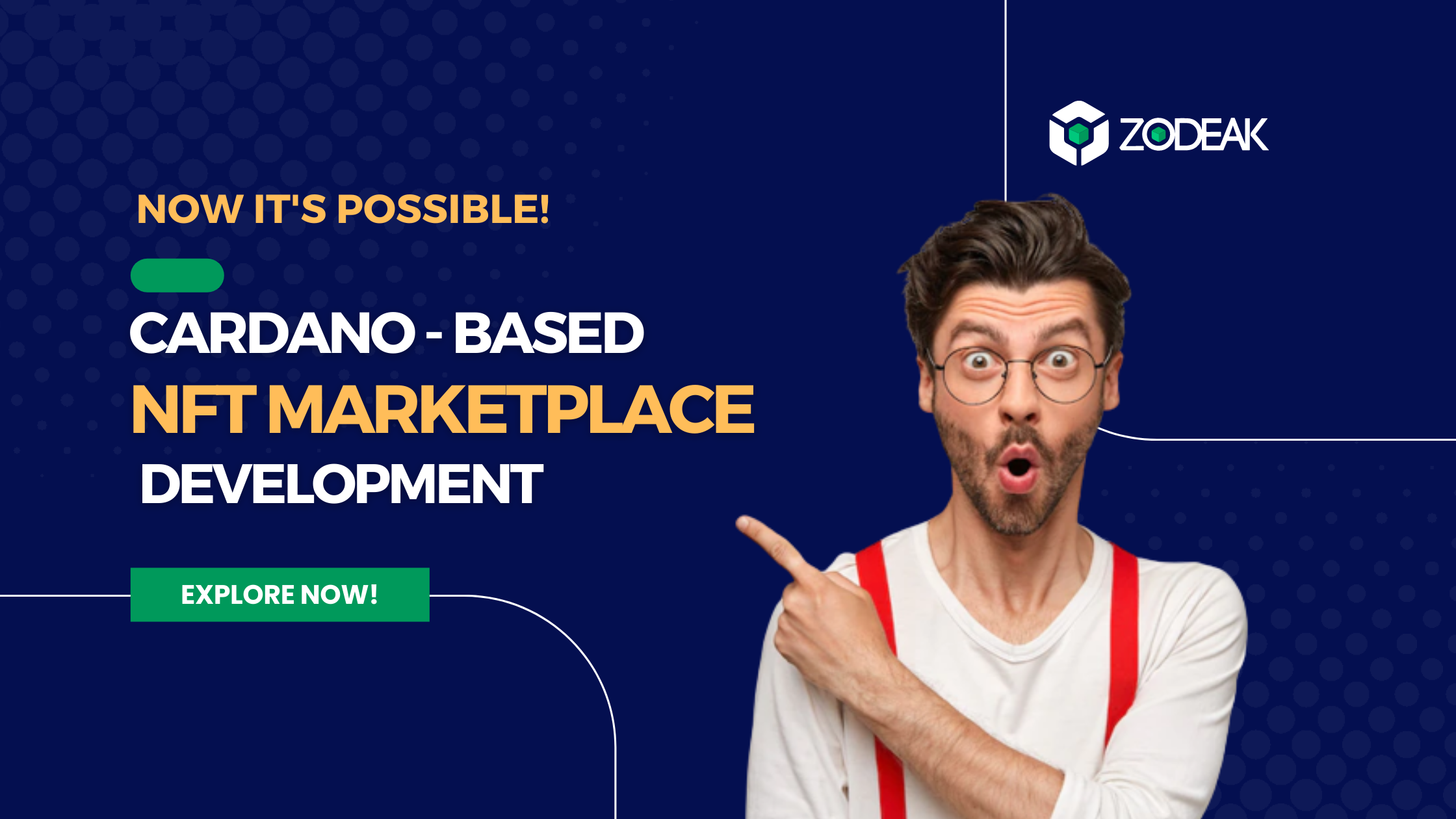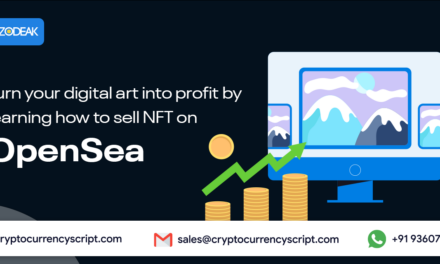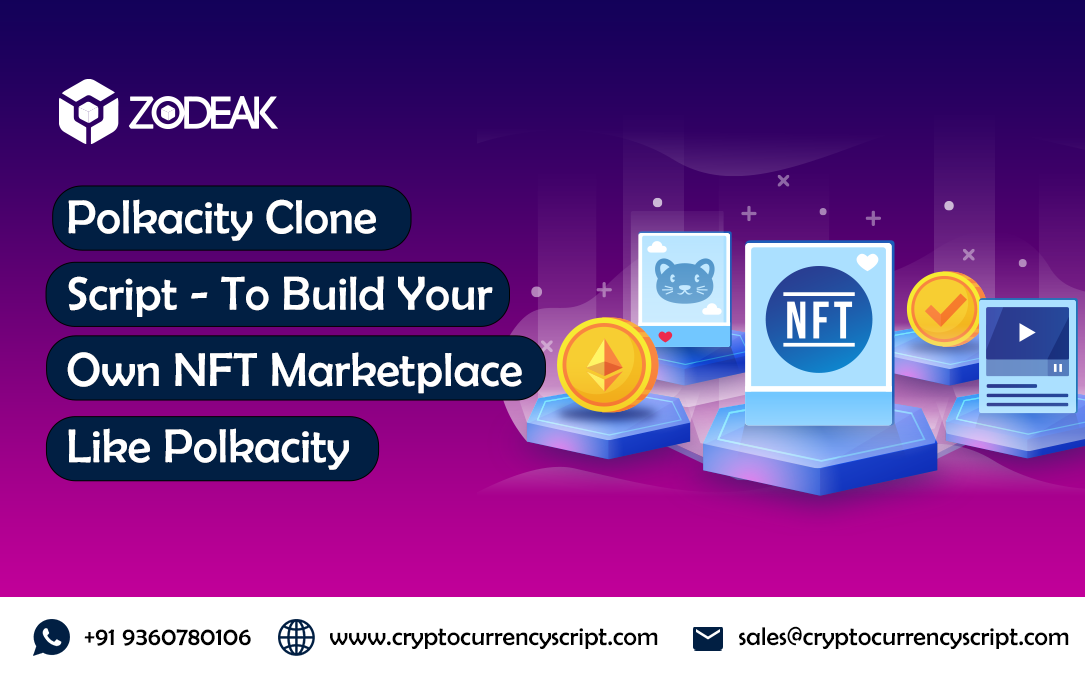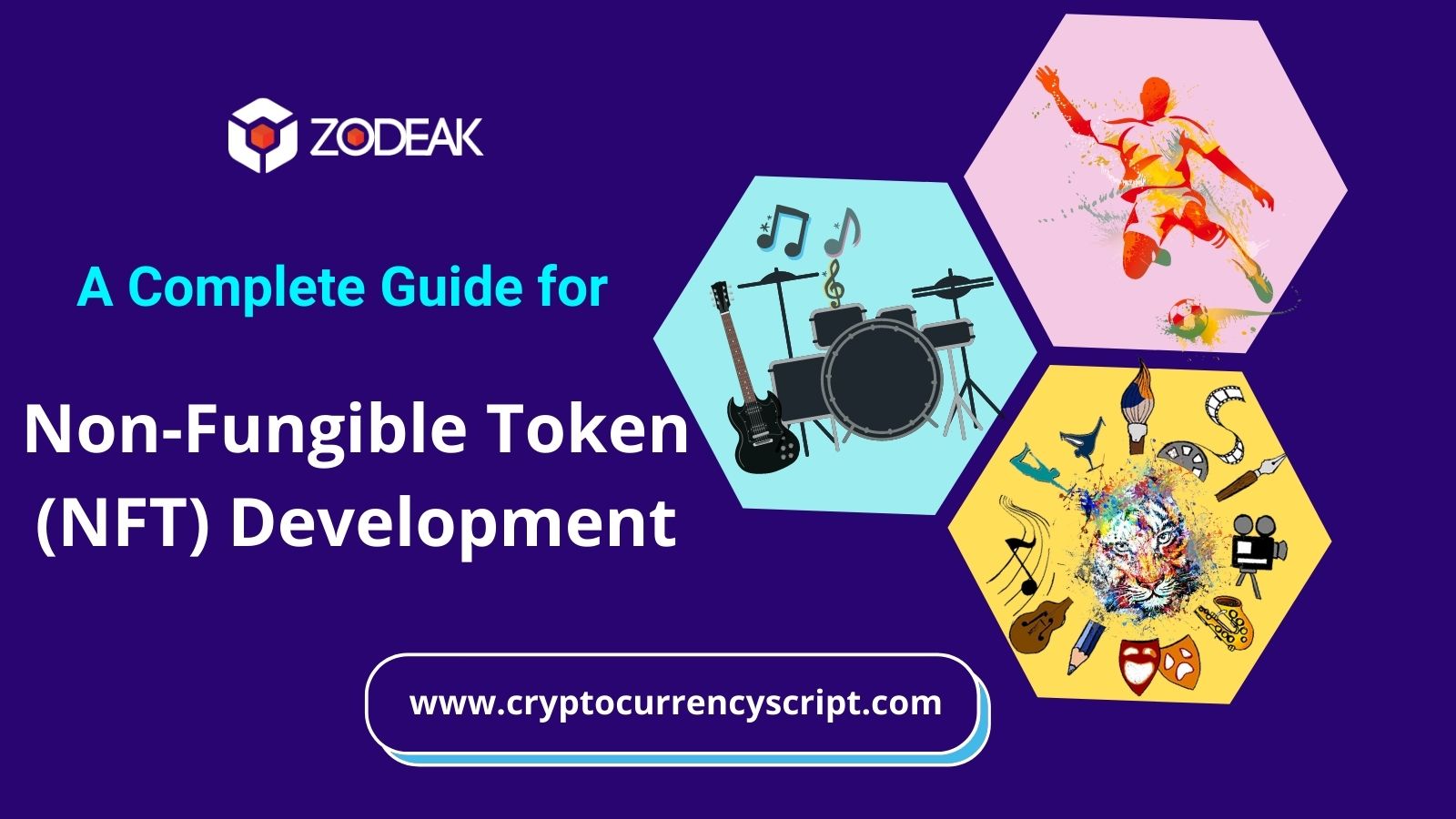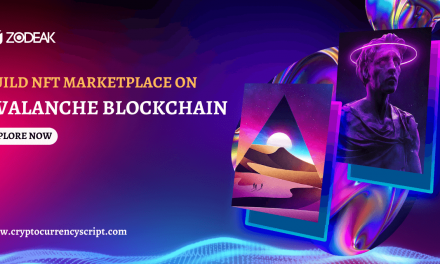In recent years, Cardano NFT marketplace development has become increasingly popular due to the increasing number of users of NFTs. Today, NFTs have the potential to revolutionize every industry so many blockchains like Cardano supports developing the niche-oriented marketplace.
Today, we going to see the benefits of creating an NFT marketplace on Cardano and the steps involved in creating such a marketplace. Not everyone may know about Cardano, NFT, and its marketplace.
So, let’s first see at the basics to understand the platform development process explained later.
About Cardano
Cardano is a blockchain platform founded by Ethereum co-founder Charles Hoskinson in 2015. It allows users to create and implement crypto tokens, smart contracts, and decentralized applications (dApps).
Also, Cardano employs the consensus mechanism Proof-of-Stake (PoS), which is more stable than Proof-of-Work (PoW). And it seeks to prioritize interoperability and regulatory compliance, making blockchain technology a viable option for users.
About NFT
A Non-Fungible Token is a cryptographic token that represents a digital asset that is unique and indivisible in nature. It is also used to indicate the ownership or authenticity of any digital files. Moreover, the generated NFTs are stored on a blockchain, which provides a transparent record of ownership and transaction history.
About NFT Marketplace
NFT Marketplace is an online platform for content creators and artists to sell their digitized content and earn revenue from their work. Also, it provides a platform for buyers to purchase unique and authentic digital assets in the form of NFT.
Generally, this NFT marketplace can be developed and deployed on Cardano or any public blockchain at the discretion of the platform owner. Here on the blog, we’ll take a look at what Cardano NFT Marketplace Development is and the steps to build one.
What is Cardano NFT Marketplace Development?
Cardano NFT Marketplace Development is the process of developing and deploying an NFT marketplace with a user-friendly interface on the Cardano blockchain. Also, the development process involves creating a user-friendly platform with features like wallet integration, secure payment processing, and NFT creation tools.
Generally, the NFT platform provides necessary features for creators (sellers) to create NFTs and for buyers to purchase desired NFTs. Also, NFT’s ownership, sold details, transactions, user data, and information are securely legered in the Cardano blockchain.
Additionally, Cardano’s blockchain is known for its scalability, speed, and low transaction fees, making it an attractive option for marketplace development. Therefore, use the benefits of Cardano blockchain technology to create a secure and efficient marketplace for NFTs.
Hope you understand what Cardano NFT market development is all about. Well, now let’s see the detailed guide to making it. Here is a guide from planning to tech stacks for Cardano NFT marketplace development discussed below.
Note that here we are not going to discuss NFT platform business like revenue model, cost structure, legal compliance, marketing strategy, etc. The below discussions only cover the steps to build NFT marketplace on Cardano.
Steps to Build NFT Marketplace on Cardano
These guiding steps will help startup entrepreneurs to create a secure and compliant marketplace that meets the needs of users. Each step is categorize into the following subset for your better understanding.
- Gathering & Planning
- Software Features
- Security Measures
- Technologies Used
These are the subset that we are going to discuss throughout the blog to start a successful NFT market.
Step 1: Gathering Info & Planning
This planning stage identifies key niches to build the NFT marketplace base, define your target audience, and finally assess the competition. These three things are must-do before you start building the solution.
Identify Niche of the NFT Marketplace
Before Cardano NFT marketplace development, it is important to identify the niche of your marketplace. This includes deciding what type of digital content will be trade on the platform, the target audience, and revenue goals.
If you are confused about choosing a niche, talk to experts from any Cardano NFT marketplace development company to identify the niche of your NFT business.
Define the Target Audience
The target audience depends on the types of digital content being sold on the NFT platform. For example, if the marketplace’ niche is art, the target audience might be art collectors and enthusiasts.
It is important to understand the needs and preferences of the target audience in order to create a platform that meets their expectations.
Evaluate the Competition
Examining existing NFT marketplaces and competitors will help identify potential gaps in the market and opportunities for differentiation. Hence, analyzing competitors’ features, pricing, and user reviews can provide insights into what works and what doesn’t.
Step 2: Determine the Software Features
The key to success is to constantly innovate and improve the platform to be at forefront of the NFT market. Moreover, having a marketplace that meets the needs of creators and buyers is essential.
Here is a list of must-have features when developing your NFT platform.
Key Features of Cardano NFT Marketplace
- User authentication
- Creation and listing of NFTs
- Purchasing and trading of NFTs
- Auctions and bidding system
- Smart contract integration
- Integration with Cardano blockchain
- Payment system (e.g. support for ADA)
- Multi-currency support
- User profile and portfolio management
- Analytics and Reporting
- Customer support and dispute resolution
Additional Features
- Social media integration
- Royalties management for creators
- Staking support for NFT holders
- Integration with third-party services (e.g. NFT market data)
- NFT customization options (e.g. adding metadata)
- Minting multiple NFTs in a batch
- Integration with crypto wallets
These are the features you should check while developing the Cardano NFT marketplace development. And It is also important to prioritize features based on user needs and budget constraints.
Now let’s see the technological stacks used in the NFT platform development on Cardano.
Step 3: Implement Security Measures
Having the best practice of implementing security features can help you ensure that the Cardano NFT market is safe and reliable for users. Thus, prioritizing security and taking precautions can provide a safe and secure environment for users to engage in NFT transactions.
Here are some security features to ensure the safety and security of the platform:
Two-factor Authentication
Two-factor authentication (2FA) is an essential security measure on any NFT marketplace platform. It adds an extra security layer to the users’ accounts. This helps prevent unauthorized access and gives users peace of mind that their account is secure.
Data Encryption
Encryption protects sensitive data such as user login credentials and NFT ownership information from attackers. This ensures that the platform is secure and users are confident in the security of their data.
Payment Security
Payment security measures such as secure payment gateways and fraud detection mechanisms ensure that financial transactions are secure. And the platform users are safeguarded from potential fraud or theft.
SSL Certificates
SSL certificates are important to encrypt data in transit between the user’s device and the server. Therefore, this helps protect against man-in-the-middle attacks and other interceptions used to steal sensitive data.
Regular Security Audits
Regular security audits will identify vulnerabilities on the platform and ensure security measures are up-to-date. Moreover, this helps prevent potential attacks and ensures the site remains secure.
Smart Contract Auditing
Auditing the Smart Contracts for security vulnerabilities is essential to ensure they function as intended and are not vulnerable to exploitation. By identifying and remediating vulnerabilities, developers can help prevent potential attacks and ensure the site remains secure.
Token Standards
Ensuring that NFTs are created using known token standards will help ensure that NFTs are secure and perform as intended. Thus, this helps prevent potential vulnerabilities or issues that can be exploited by attackers.
User Education
Educating users is one of the best practices to improve the security of the platform. Moreover, creating strong passwords and avoiding phishing scams, will help users aware of potential security threats and take precautions to protect their accounts and data.
Step 4: Choose Appropriate Technologies
To develop NFT marketplace on Cardano, various technologies must work together to create a secure and high-performing platform. Some of the following technologies used for the Cardano NFT marketplace development:
- Front-end Development: React.js, TypeScript, Material UI & Redux
- Back-end Development: Node.js, Express & Rust
- Blockchain Network: Cardano
- Smart Contract Language: Plutus, Solidity & Rust
- API Development: GraphQL or REST API
- Database: MongoDB
- Storage: IPFS
- Payment Integration: PayPal, Cards, Bank & Cryptocurrency
- Cloud Computing: Infura.io
- DevOps: Docker, Kubernetes & Terraform
- Hosting Service Provider: Cloudflare
- Blockchain Explorer: Cardano Explorer or Blockchair
- NFT Standards: Cardano (CIP-25) or Ethereum (ERC-721 & ERC-1155)
Therefore, these are some of the technologies that can be used to build the NFT market on Cardano. Besides, other technologies will also be used, depending on the specific requirement of your project,
Summary of the Steps!
Developing an NFT marketplace on Cardano requires careful planning, listing features, security measures, and technical expertise. Also, key considerations include defining the marketplace’s goals, identifying the target audience, and evaluating the competition.
Additionally, the user interface should be user-friendly and visually appealing to attract users. Furthermore, implementing secure payment processing, ensuring secure data storage, conducting regular security audits, and establishing a dispute resolution process is essential to protect users and avoid legal issues.
Wrapping Up!
Hope this blog gives you some useful information on the NFT platform on Cardano. By using the steps outlined in this blog, you can successfully create a secure, scalable, and efficient platform. Therefore, build NFT marketplace on Cardano today and enter into the rapidly growing NFT space!
Click the subscribe button to stay connected with Zodeak and get regular updates on Cardano NFT marketplace development that matters to you!

